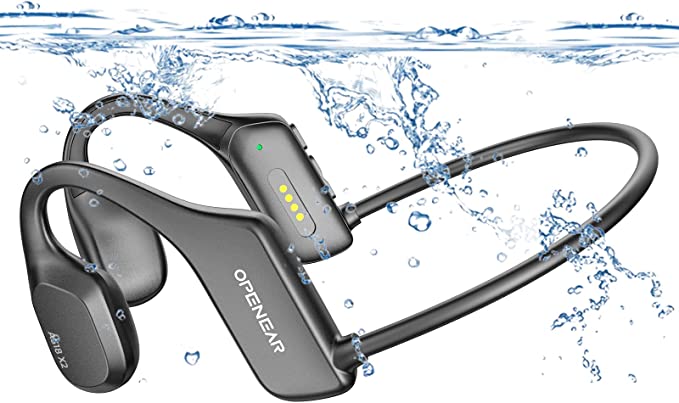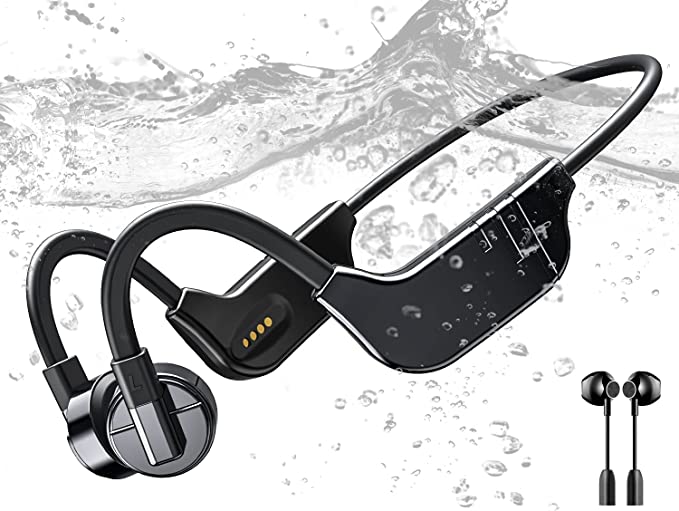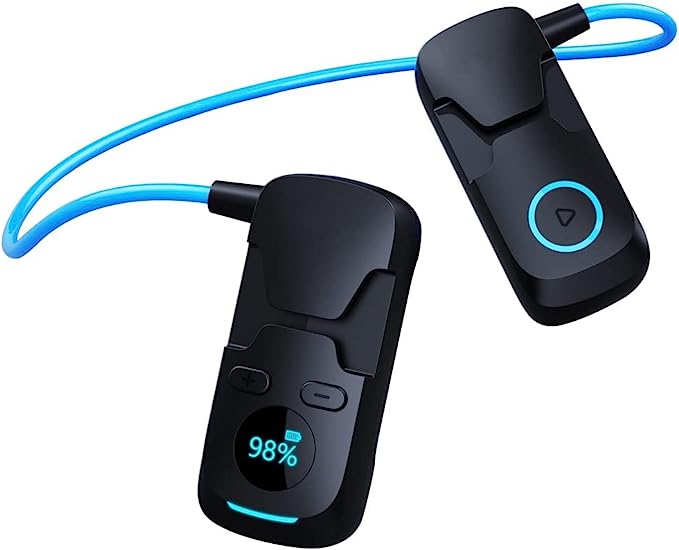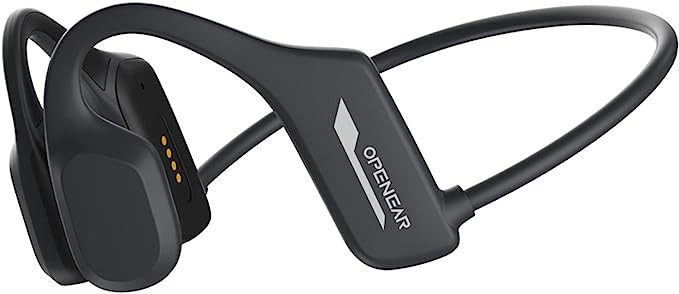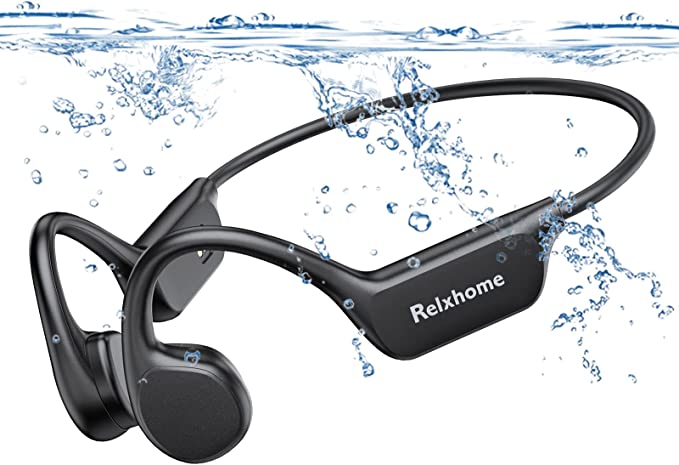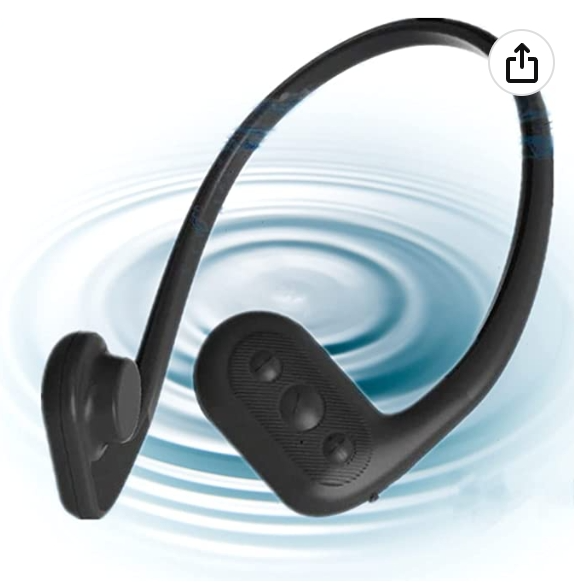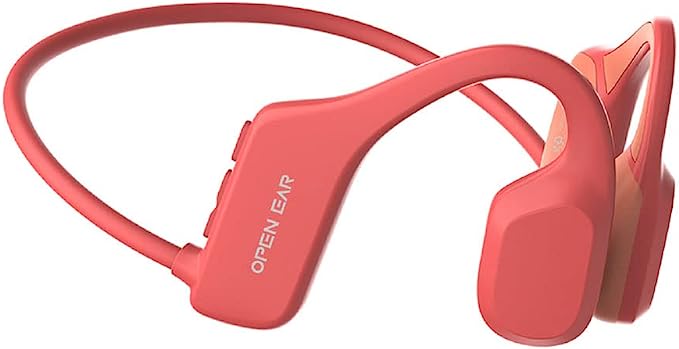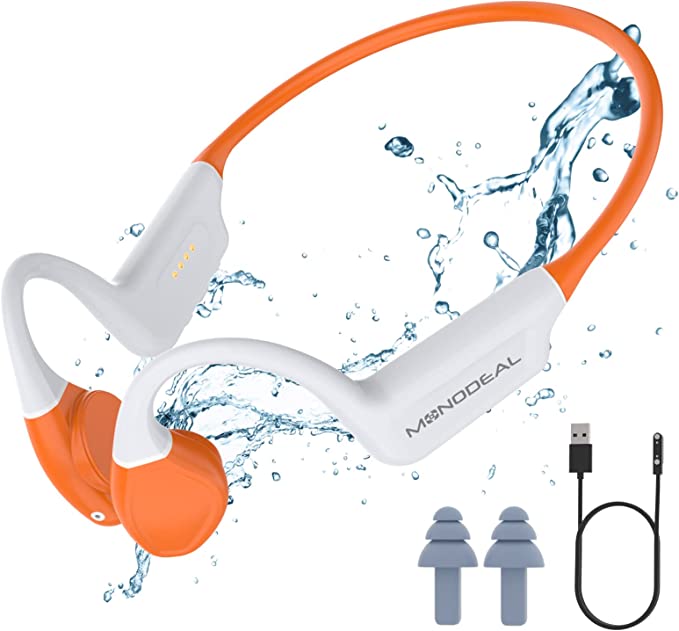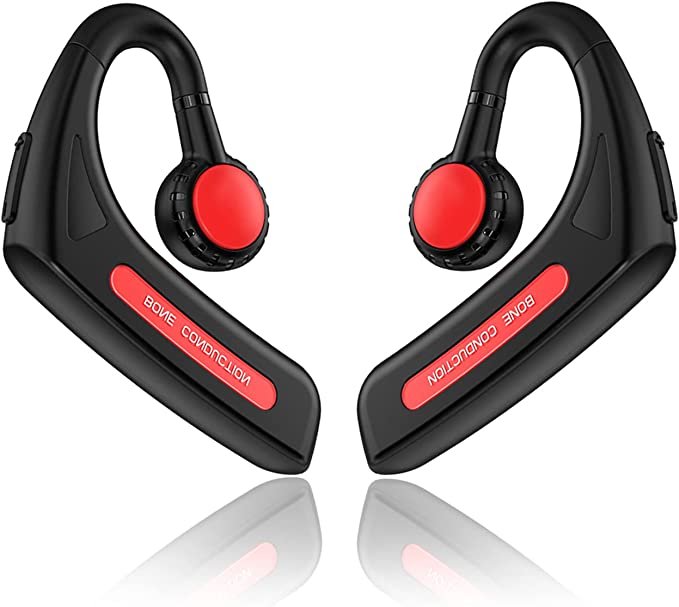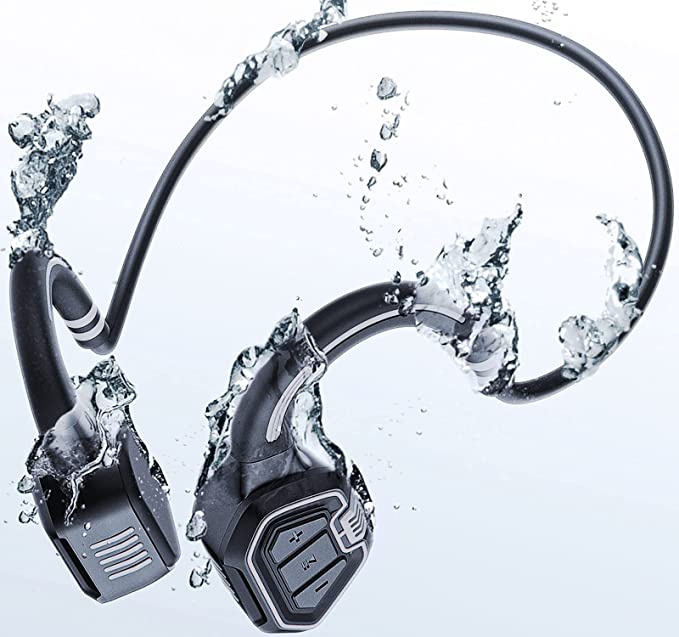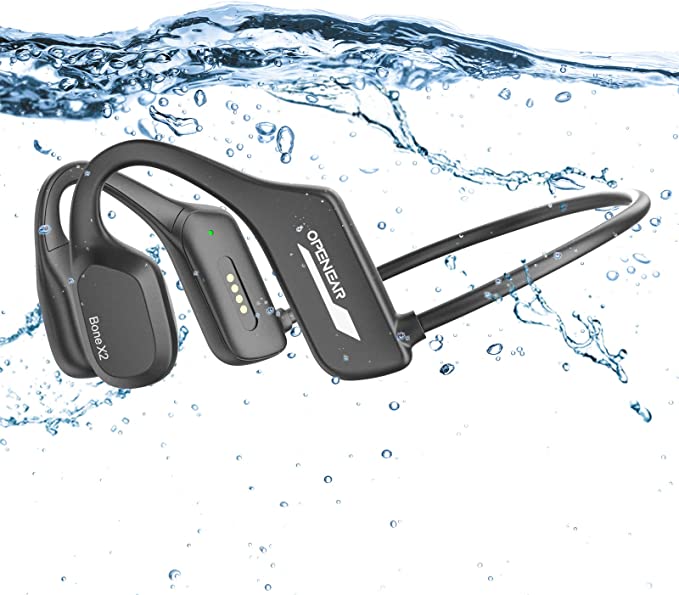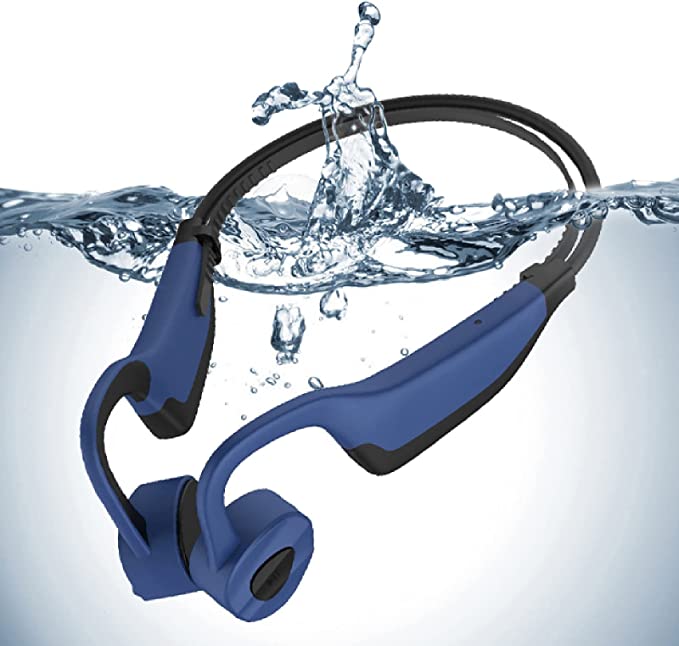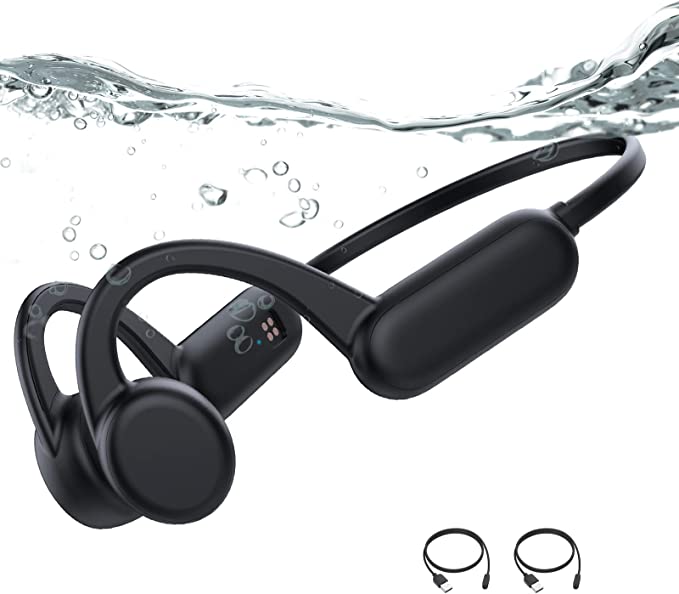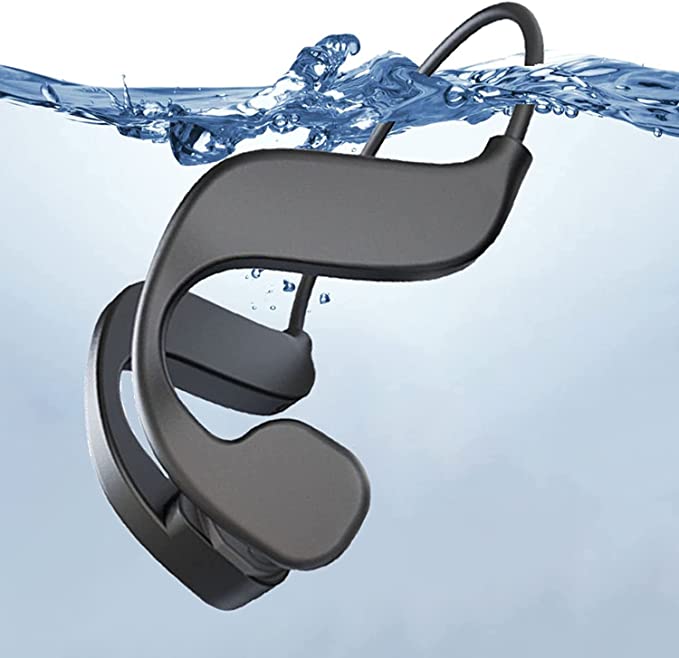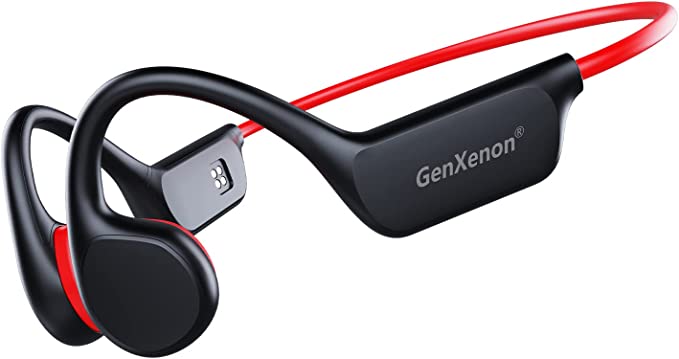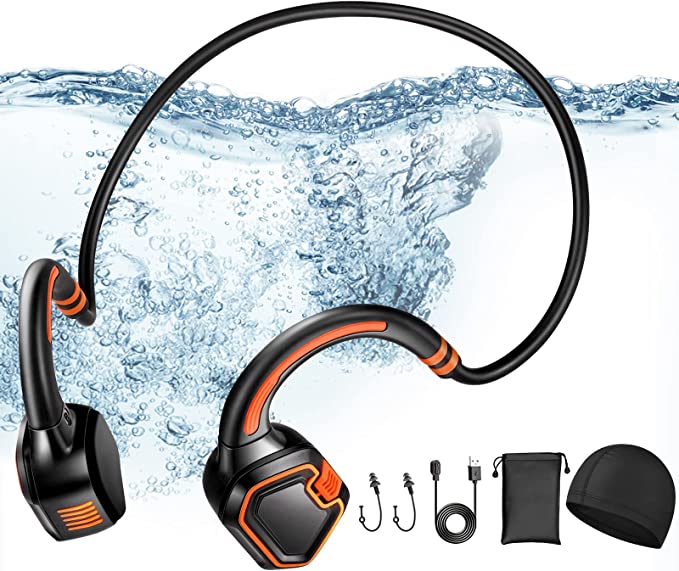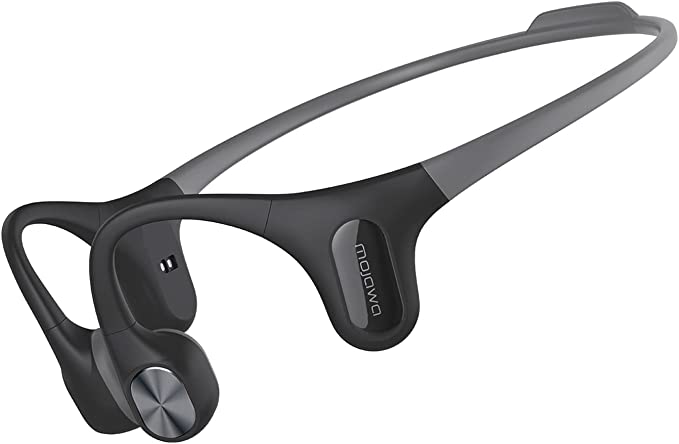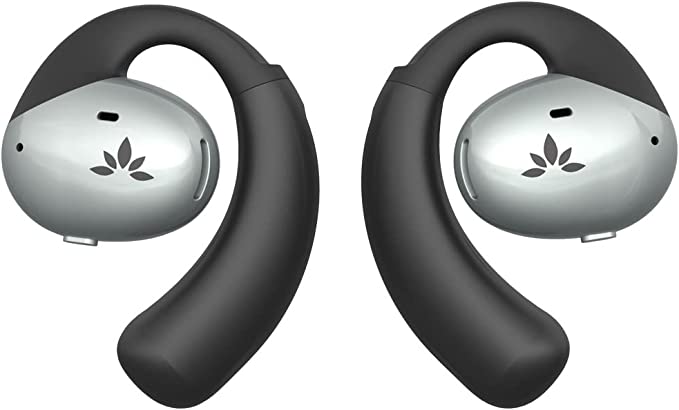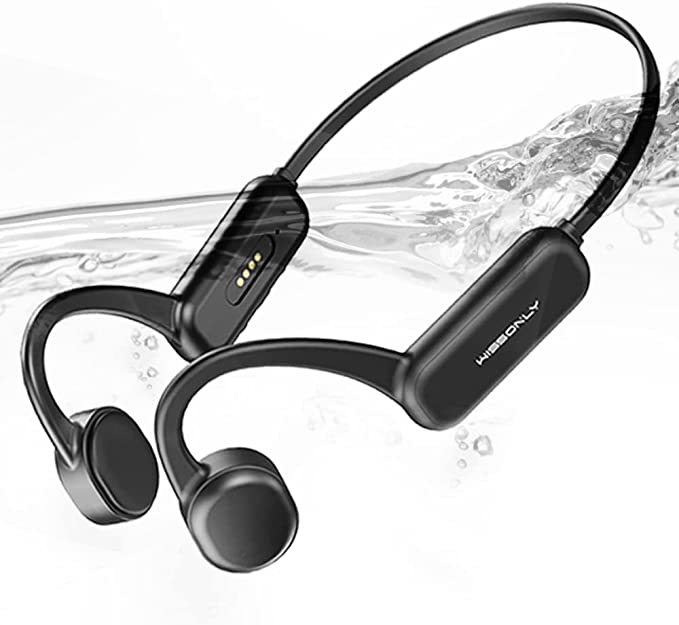OUFUNI SBCH-B Swimming Bone Conduction Headphones
Update on June 23, 2025, 3:42 p.m.
The rhythmic splash of water, the focused intensity of a workout, the sheer joy of movement – for many, these experiences are profoundly enhanced by a personal soundtrack. Yet, the aquatic realm, be it a pool, lake, or ocean, presents a formidable challenge to our electronic companions. Water and delicate gadgetry have historically been uneasy partners. Enter the OUFUNI SBCH-B, a set of swimming headphones designed not just to survive the water, but to deliver your music within it, leveraging a fascinating ensemble of technologies. Let’s dive into the science that makes this possible.

Whispers Through Your Bones: The Magic of Bone Conduction
Imagine hearing music clearly, yet your ears are completely open to the world around you. This isn’t a futuristic fantasy; it’s the reality of bone conduction technology, a cornerstone of the OUFUNI SBCH-B’s design. Unlike traditional headphones that pump sound waves into your ear canal to vibrate your eardrum, bone conduction transducers rest gently on your cheekbones. From there, they transmit sound as subtle vibrations that travel through the bones of your skull directly to the cochlea, the spiral-shaped organ of the inner ear responsible for hearing. Essentially, it’s a clever shortcut, bypassing the outer and middle ear. Think of it like feeling the deep thrum of bass from a powerful speaker through the floor at a concert, but refined and channeled to deliver the full spectrum of sound right into your auditory processing center.
This “open-ear” approach brings a cascade of benefits. Firstly, and perhaps most crucially for active individuals, is situational awareness. Whether you’re navigating a busy running trail or sharing a swimming lane, being able to hear a shouted warning, an approaching vehicle, or simply the ambient sounds of nature is invaluable for safety. It keeps you connected to your environment. Secondly, there’s comfort. For many, in-ear headphones can cause pressure, discomfort, or a tendency to fall out, especially during vigorous activity. Bone conduction headphones, by their very nature, alleviate this. The OUFUNI SBCH-B, weighing a mere 29 grams – about the same as a few coins – further amplifies this comfort, making them suitable for extended wear. It’s worth noting that the auditory experience via bone conduction can be different from what you’re used to with conventional headphones; some describe the sound as more resonant or as having a unique spatial quality. It’s a different pathway, and thus, a slightly different perception.

Fortress Against the Flood: Demystifying IP68 Waterproofing
Any device intended for serious aquatic use needs an impenetrable defense against water. The OUFUNI SBCH-B boasts an IP68 rating, a standardized declaration of its resilience. But what do these letters and numbers truly signify? “IP” stands for Ingress Protection, a global standard (IEC 60529) that classifies the degree of protection provided by an enclosure against the intrusion of solid objects (like dust) and liquids.
The first digit, “6” in IP68, indicates the highest level of protection against solid particles: it’s “dust-tight.” No speck of dust, no matter how fine, can find its way into the sensitive innards. The second digit, “8,” is where things get really interesting for swimmers. It signifies protection against “continuous immersion in water” under conditions specified by the manufacturer, which are generally more severe than for IPX7 (which typically covers immersion up to 1 meter for 30 minutes). An IP68 rating means the device is engineered to not just tolerate being submerged but to function reliably while there, often beyond 1 meter for extended periods. As OUFUNI states, the SBCH-B can be “worn completely underwater,” making it a dependable companion for swimming, diving, or surfing. This robust sealing is vital for the longevity of the electronics and ensures your aquatic soundtrack doesn’t get cut short by an unwelcome deluge.

The Underwater Broadcast: Why Your MP3 Player is King (and Bluetooth Takes a Backseat)
You might wonder, in an era dominated by wireless streaming, why these headphones feature a dedicated MP3 player. The answer lies in the fundamental physics of how radio waves interact with water. Bluetooth technology, which typically operates in the 2.4 GHz radio frequency band, faces an almost insurmountable obstacle underwater. Water is significantly denser than air and is highly effective at absorbing these radio waves. Imagine trying to shine a flashlight beam through a murky pond; the light scatters and dims rapidly. Similarly, Bluetooth signals are severely attenuated, meaning their strength drops комментарии, making a stable connection for audio streaming virtually impossible just a few inches beneath the surface. Water acts as a dense, signal-absorbing curtain.
The OUFUNI SBCH-B elegantly sidesteps this aquatic silencer by incorporating an onboard 16GB MP3 player. This is like having a compact, waterproof jukebox strapped to your head, capable of storing, as the manufacturer suggests, “about 5000 music” files (which translates to hundreds of hours of listening, depending on file size and format like MP3 or WAV). For clear, uninterrupted audio while swimming, switching to MP3 mode is not merely an option—it’s a necessity. The product information indicates this switch is made via a “fast continuous double click MFB” (Multi-Function Button). Loading your personalized aquatic playlist is straightforward: connect the headphones to your computer using the provided magnetic data cable (and the included USB-C adapter if you’re a Mac user), then simply drag and drop your audio files onto the device’s drive.

Surface-Level Smarts: Features for Your Dry-Land Endeavors
When you’re back on terra firma, the OUFUNI SBCH-B transitions smoothly into a more conventional wireless headset role, thanks to its Bluetooth 5.1 connectivity. This version of Bluetooth generally offers faster data transfer and more stable connections compared to its predecessors, suitable for taking calls or streaming music from your smartphone or laptop. The product specifies a “32 inches of signal transmission (in the absence of obstacles),” a modest range that implies your paired device should remain relatively close for optimal performance.
The design is clearly geared towards an active lifestyle. Beyond its lightness, the headphones feature a convenient magnetic charging system. A full 1.5-hour charge is stated to provide approximately 5 hours of continuous music playback or talk time, while a quick 5-minute charge can deliver about an hour of use – handy for those impromptu workouts. The Multi-Function Button isn’t just for mode switching; it also handles calls, music playback controls, and can summon your phone’s voice assistant (like Siri) with three quick clicks.

The User Experience: Where Technology Meets Human Perception
The real-world performance of any technology is ultimately judged by those who use it. The OUFUNI SBCH-B, with its 3.3 out of 5-star average rating from 33 users (as per the provided data), reflects a spectrum of experiences. Some users commend its suitability for working out (rated 4.0/5 for this aspect) and report clear sound underwater, especially when correctly utilizing the MP3 mode. Others have noted a learning curve associated with loading music onto the MP3 player or have experienced variability in underwater audio quality.
Understanding these nuances often comes down to appreciating the interplay of technology and individual factors. The unique sound signature of bone conduction, for instance, can be a different auditory experience that some may adapt to more quickly than others. A secure and proper fit, often enhanced by the included swim cap for added stability, is also crucial for optimal sound transmission. The product information also mentions “waterproof earbuds” and “memory foam earbuds” as accessories. While using occluding earbuds would negate the open-ear benefit for situational awareness, they might be intended to alter the perceived sound quality in certain conditions, perhaps by creating a more sealed acoustic environment or reducing external noise interference when desired. Critically, consistent and clear underwater audio hinges on using the MP3 mode, as Bluetooth is simply not viable in that environment.

Conclusion: Your Personal Bubble of Sound in the Blue
The OUFUNI SBCH-B swimming headphones are more than just a waterproof gadget; they represent a thoughtful integration of distinct technologies—open-ear bone conduction, robust IP68 waterproofing, and reliable onboard MP3 playback. This technological trio works in concert to address the unique challenges of delivering a personal audio experience in the demanding aquatic environment.
It’s about empowering athletes and casual swimmers alike to weave their favorite soundscapes into their aquatic activities, enhancing motivation, enjoyment, and perhaps even performance, all while maintaining a connection to their surroundings if desired. Understanding the science that powers these headphones—the alternative auditory pathway, the engineering behind their resilience, and the physics dictating their underwater playback method—not only enriches the user experience but also allows one to fully appreciate the innovation aimed at expanding the boundaries of where and how we can enjoy our sound. It’s a dive into a world where technology and water don’t just coexist, but collaborate to create your personal bubble of sound in the blue.
